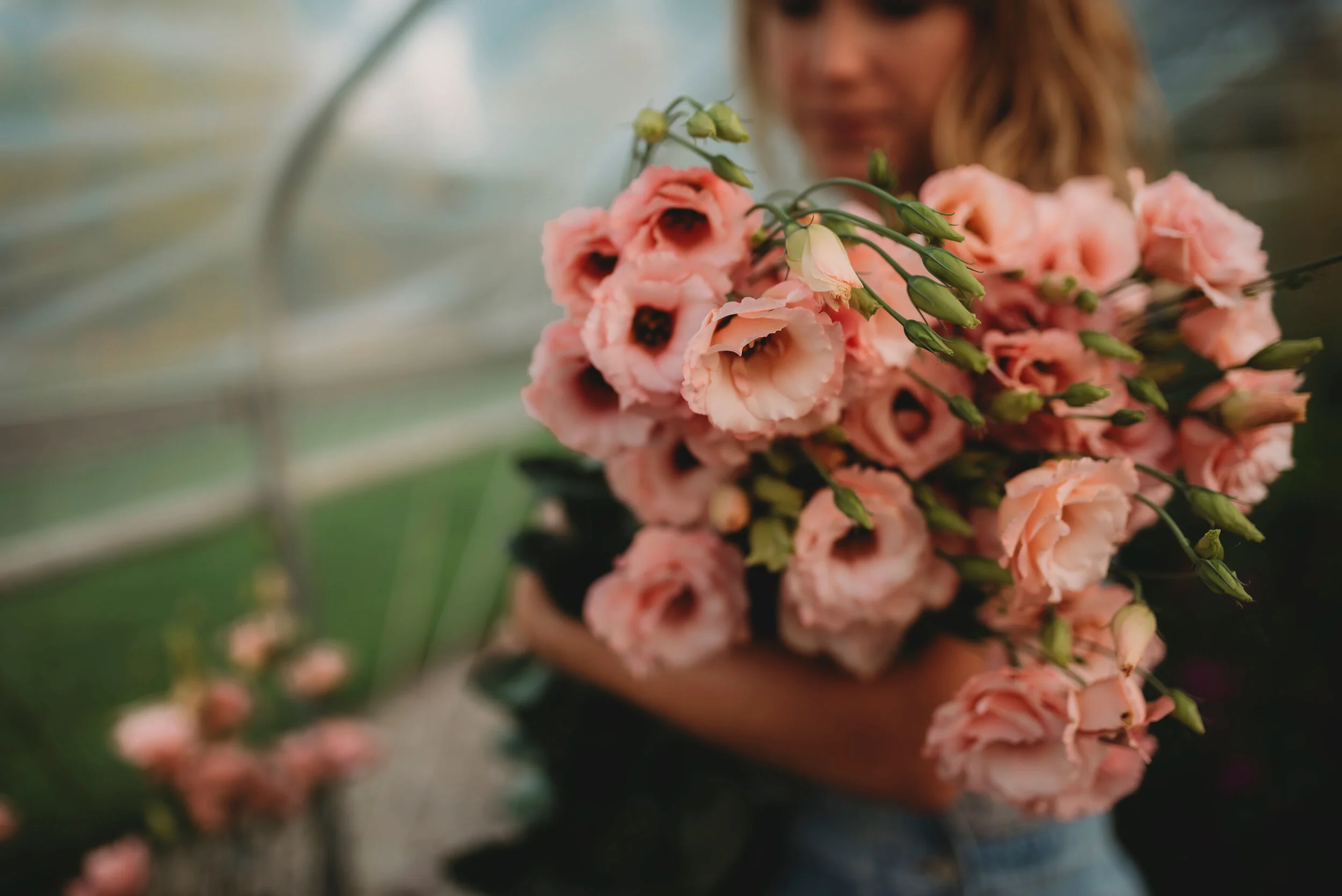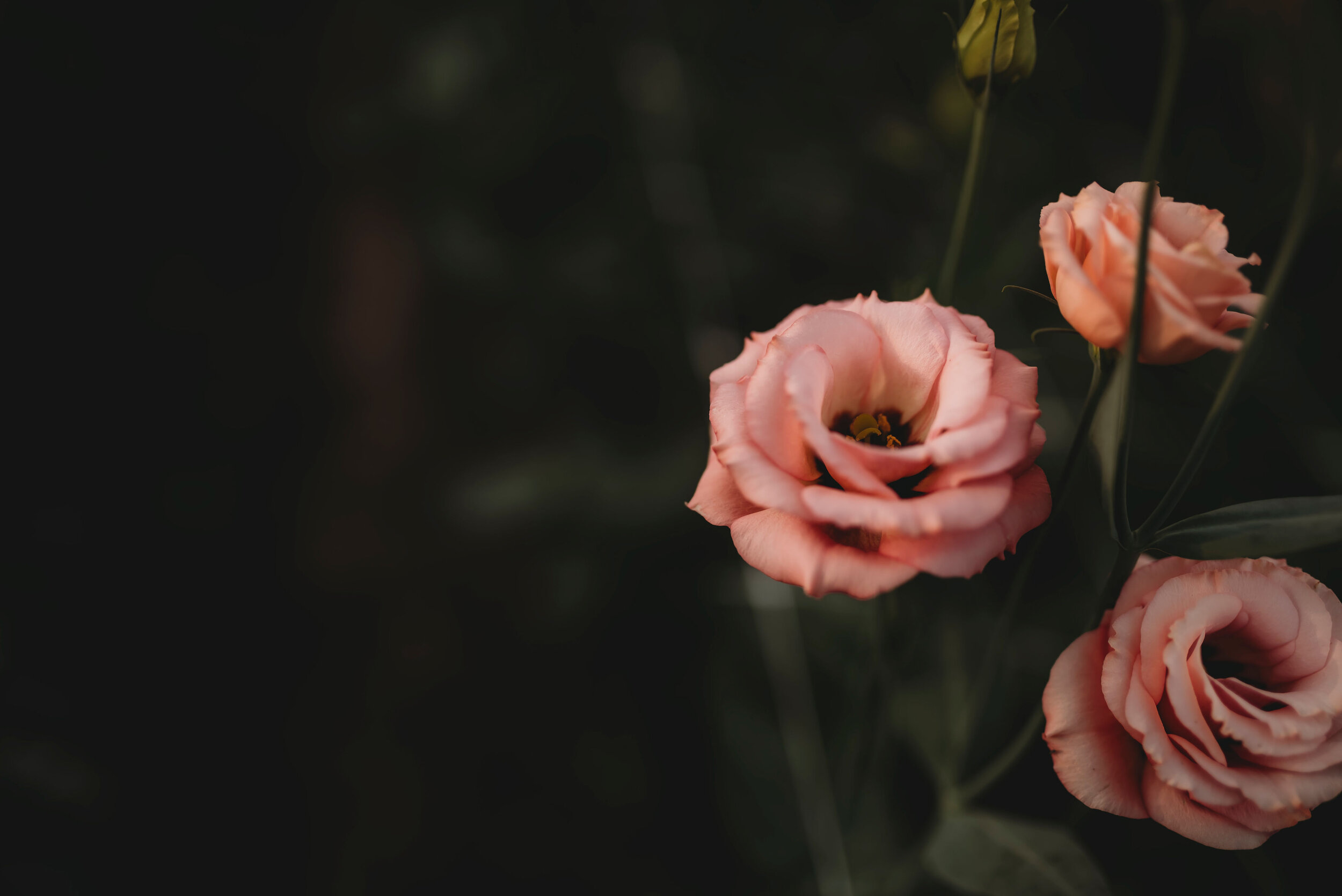How to Extend Your Flowers Vase Life
How to extend your flowers vase life
Tips to keeping your flowers fresh.
I am sure you have heard all the old wives’ tales about dropping copper pennies in the water or even aspirin to keep the water from forming bacteria. Or my personal favorite is a splash of vodka. We call that a Blooming Vodka & Tonic! (That was a joke, please do not drink from your vase of water)
We know you see the value of local flowers and you want them to last as long as they possibly can. Below are a few tips to make that bouquet last.
First, it’s important to note that vase life varies greatly between different flower varieties. Dahlias for example are one of the most requested flowers on our farm but their beauty is fleeting. We only expect 3-5 days out of them on average. Lisianthus on the other hand can last 10-12 days in a vase. On some flowers with multiple blooms per stem, such as Cosmos, a single bloom may only last a day or so but the other buds on the stem will continue to open if they are trimmed. Knowing the expected vase life helps to set your expectations for the vase life of your bouquet. Check out our social media pages later today to see tips on cleaning up an older bouquet.
8 Tips to Extend Your Flowers Vase Life
Start with a clean vase. Washing vases with hot soapy water is recommended after each use. We personally use a small amount of bleach in our buckets to make sure all the bacteria are killed. The easiest way to shorten the flower’s life is by not starting with a clean vase.
Gently strip the leaves off of the stem so no leaves fall below the waterline. Leaves and other debris in the water will cause bacteria to quickly form. Bacteria in the water clog the stems’ ability to take up water and will ultimately reduce vase life.
Cut each stem at a 45-degree angle with a clean sharp knife or scissors. Sanitation is important at every step in this process. Having a sharp tool to cut the stems allows you to not crush the end of the stems.
Change the water every 2-3 days. Some flowers we grow like Sunflowers and Zinnias have small hairs on the stems that sluff off into the water. Around the farm, we call these the ‘dirty flowers’. We use CVB tablets or 10-1 bleach solution in our holding buckets to reduce the bacteria growth. A good rule of thumb is when you see the water start to become cloudy, you should change it.
When you change the water, give the stems a fresh cut on the bottom. This allows for maximum hydration.
Don’t be afraid to pull the dead flowers out of the arrangement or pull off bad petals. I am amazed how one dead flower front and center can give the impression the whole bouquet is dying. Once I change the water, give a fresh cut, and pull out the compost flowers the arrangement looks revived and lasts for days. Some weeks, depending on the mix of flowers, I might do this two times before I compost them.
Keep flowers away from ripening fruit and out of direct sunlight. Ripening fruit gives off a colorless and odorless gas, ethylene. Believe it or not, this sneaky gas can cause wilting of flowers and leaf/petal drop, making you think you just purchased old flowers. Direct sun through a window also speeds up the dying process. I love having flowers on my desk in my sunroom but I know they are going to die several days sooner because of the direct sunlight. shining on them.
Homemade flower food. We personally don’t use flower food because the tips we mentioned above do a great job extending the vase life for us. However, if you are curious about the effects of the flower food we encourage you to give DIY flower food a try. Mix two tablespoons of apple cider vinegar with two tablespoons of white sugar. Add that mixture to 32 oz. water and stir. Let us know if you give it a try, we would love to hear what you think.
Thank YOU so much for your loyal following and supporting our farm.
Be well,
Lyndsay



